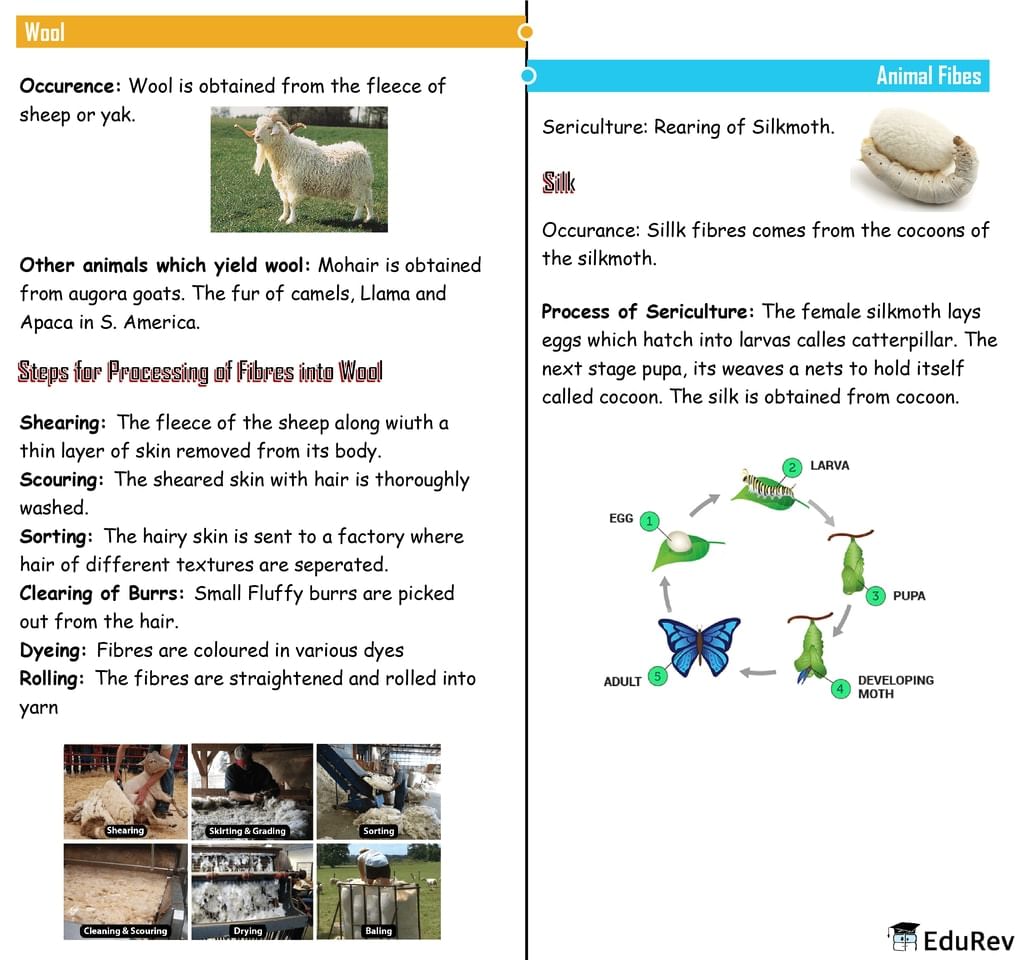UPSC Exam > UPSC Notes > Class 6 to 12 NCERT Mindmaps for UPSC Preparation > Mind Map: Fibre to Fabric
Mind Map: Fibre to Fabric | Class 6 to 12 NCERT Mindmaps for UPSC Preparation PDF Download

The document Mind Map: Fibre to Fabric | Class 6 to 12 NCERT Mindmaps for UPSC Preparation is a part of the UPSC Course Class 6 to 12 NCERT Mindmaps for UPSC Preparation.
All you need of UPSC at this link: UPSC
FAQs on Mind Map: Fibre to Fabric - Class 6 to 12 NCERT Mindmaps for UPSC Preparation
| 1. What is fibre in the context of fabric production? |  |
Ans. Fibre in the context of fabric production refers to the basic unit used to make yarn or thread. It is a thin, elongated strand that can be natural, such as cotton or wool, or synthetic, such as polyester or nylon.
| 2. What are the different types of natural fibres used in fabric production? |  |
Ans. There are several types of natural fibres used in fabric production, including cotton, wool, silk, linen, and jute. Each of these fibres has unique properties that make them suitable for different types of fabrics.
| 3. How is fabric produced from fibres? |  |
Ans. Fabric production from fibres involves several steps. First, the fibres are cleaned and sorted to remove impurities. Then, they are spun into yarn or thread, either by hand or using machines. The yarn is then woven or knitted to create the fabric. Finally, the fabric is finished, which may involve processes like dyeing, printing, or adding special finishes.
| 4. What are synthetic fibres and how are they different from natural fibres? |  |
Ans. Synthetic fibres are man-made fibres that are produced through chemical processes. They are created by converting raw materials, such as petroleum, coal, or natural gas, into polymers. Synthetic fibres have certain advantages over natural fibres, such as being more durable, resistant to wrinkles, and often less expensive. However, they may not have the same breathability or natural feel as natural fibres.
| 5. How can fabric be made from recycled fibres? |  |
Ans. Fabric can be made from recycled fibres by collecting discarded textiles and breaking them down into their original fibres. These fibres are then processed and spun into new yarn or thread, which can be used to create new fabrics. This process helps reduce waste and the need for virgin raw materials, making it more environmentally friendly.
Related Searches
















